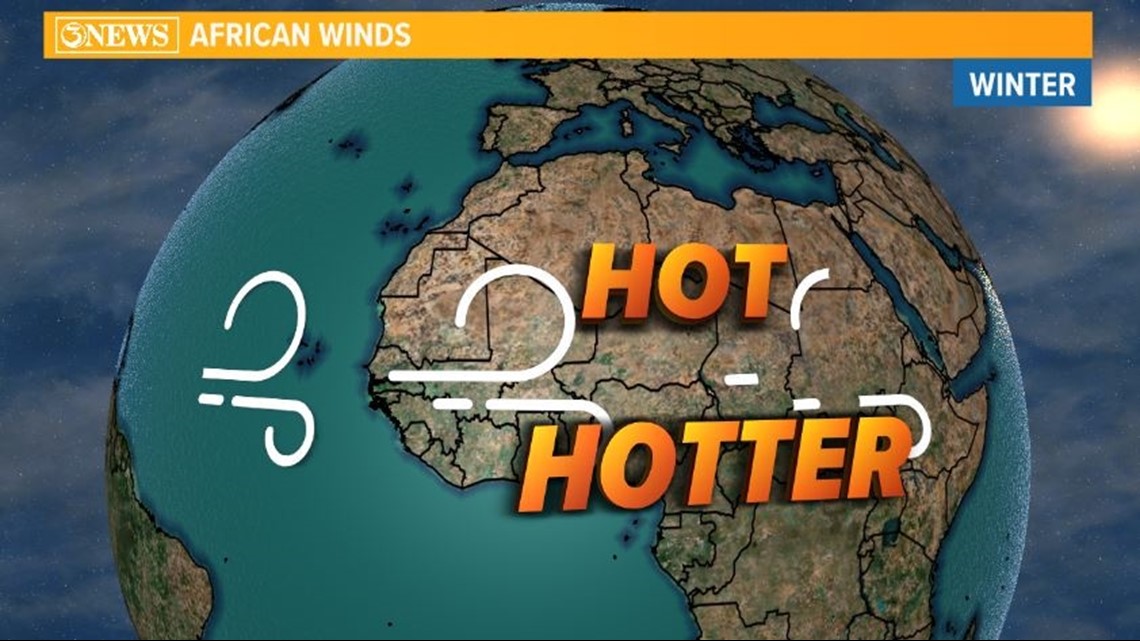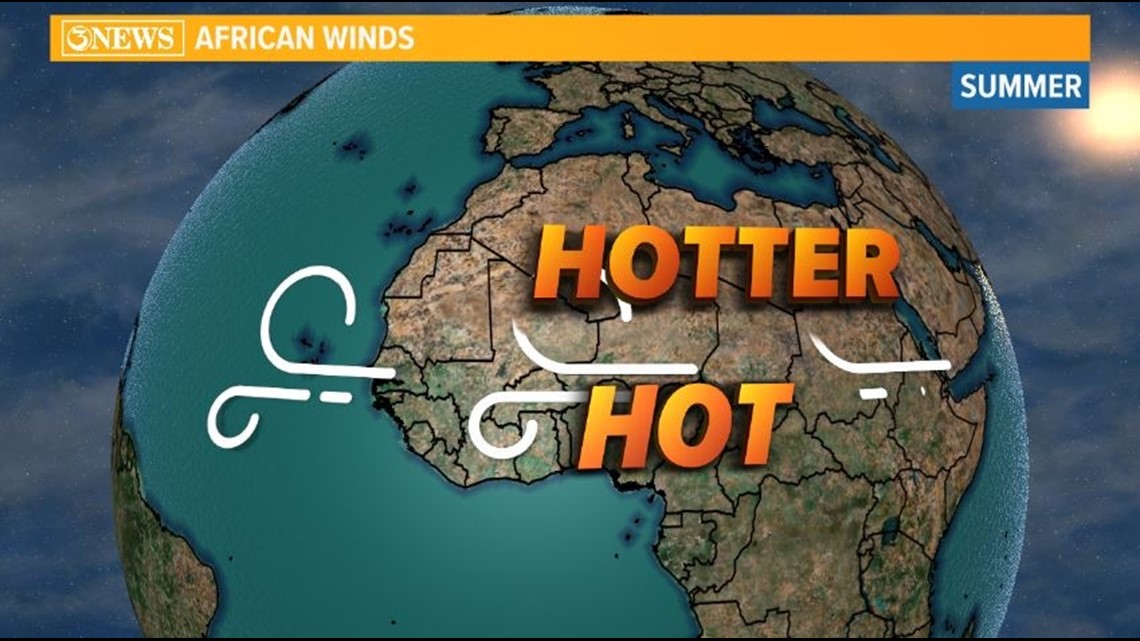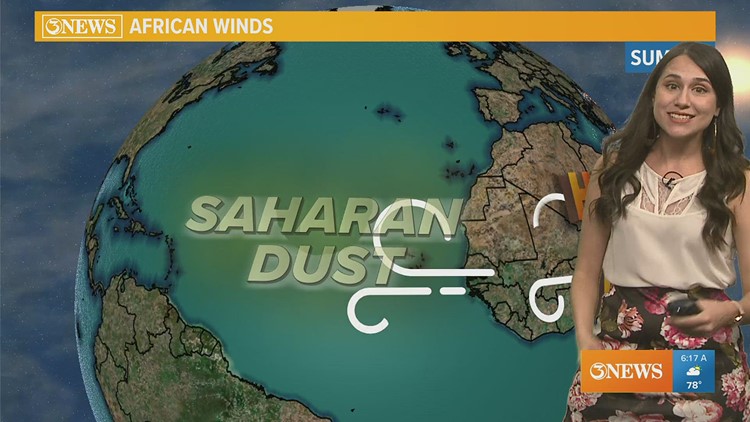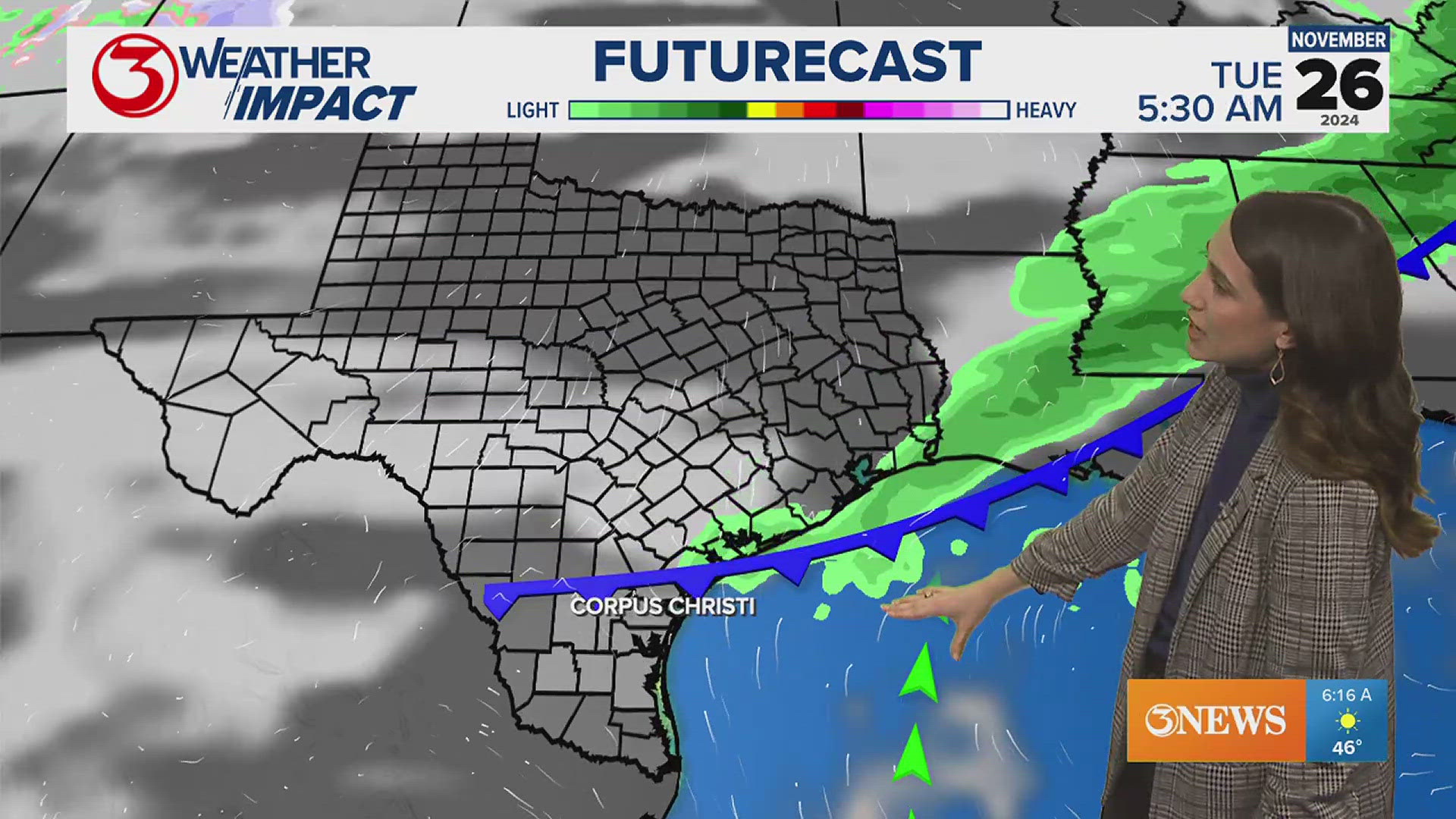CORPUS CHRISTI, Texas — We always hear about Saharan dust during the summer and throughout Hurricane Season. Why don't we hear about it in the winter?
It all has to do with temperature and the seasons.
When we're in winter in the Northern Hemisphere, the Southern Hemisphere is in summer. That's important because it means temperatures will get hotter as you go south. The change in temperature over a distance is called the 'temperature gradient.'
The relationship that determines the wind direction is: "The east/west wind (and how it changes with height) is proportional to the negative of the north/south temperature gradient."
So in winter, the temperature gradient will be negative because temperatures cool off heading farther north. The opposite of a negative is a positive, meaning that the wind will blow from west to east.


In the summer, the temperature gradient from the Equator to the Saharan Desert is positive because temperatures heat up heading north (up until a certain point - more on that in a minute). The opposite of a positive is a negative, meaning that the winds will now turn around and blow from east to west.
These are the winds that pick up dust from the Saharan Desert in the summer. The winds - referred to as the 'African easterly jet' in the upper atmosphere - carry the dust all the way across the Atlantic ocean and into our very own backyards.


While temperatures do heat up over Africa as you head north from the Equator in the summer, they will eventually also cool off from north Africa up to the Mediterranean and Europe. Think about it: even in summer, the Arctic is still cold.
The sun can only travel directly overhead up until the Tropic of Cancer (23.5°N), which happens to be right over the Saharan Desert. So it gets really hot right there in the summer, causing the positive temperature gradient that flips the wind direction.
But similar to when the Northern Hemisphere is in winter, the temperature gradient from the Saharan Desert to the Mediterranean is negative. That means the winds continue to blow from west to east over this area - even during the summer.



